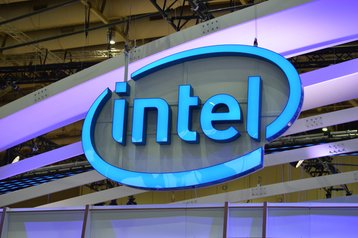In an internal memo celebrating the end of the year, Intel CEO Brian Krzanich declared that the company will be taking more risks as the revenue it can squeeze from the PC market continues to shrink.
The memo, published by CNBC, highlighted growth opportunities in areas involving data - memory, FPGAs, IoT, artificial intelligence and autonomous driving.
50 years of Intel
Krzanich begins his message with a tale about downsizing. He mentions that, soon after he joined the company in the early ’80s, Intel was “faced with a rapid decline in our core business, made a bet-the-company decision to get out of memory and switch to manufacturing microprocessors.”
“I was about three months into the job when my boss walked in and said, ’We’re not in the DRAM business anymore. We’ll shut the factory down.’ I remember calling up my father and telling him, ‘Well, I’ll be coming home.’”
But, instead, “I watched as Intel made a massive shift. It required downsizing, new investments, and a lot of change. Yet in December 1997 - 20 years ago this month - Time magazine named then-Intel CEO Andy Grove its Man of the Year. Under his leadership, Intel had transformed from embattled memory maker to the world’s leading microprocessor company and a leader of the digital revolution.”
Krzanich envisions another turning point for the company: “Two decades later, Intel is again reinventing itself and I’m inspired by the accomplishments of this past year.”
He continued: “It’s almost impossible to perfectly predict the future, but if there’s one thing about the future I am 100 percent sure of, it is the role of data. Data is becoming the most valuable asset for any company. That’s why our growth strategy is centered on data: memory, FPGAs, IoT, artificial intelligence, autonomous driving. Anything that produces data, anything that requires a lot of computing, the vision is, we’re there.
“I believe almost everything that impacts our lives - whether it’s healthcare or driving, retail or government - it will all be touched by our technology over the next 5 to 10 years. The world will run on Intel silicon.”
He added that the company is “just inches away from being a 50/50 company, meaning that half our revenue comes from the PC and half from new growth markets. In many of these new markets we are definitely the underdog. That’s an exciting challenge - it requires that we develop and use new, different muscles.”
This means that “the new normal for Intel“ is that the company is “going to take more risks. The new normal is that we will continue to make bold moves and try new things. We’ll make mistakes. Bold doesn’t always mean right or perfect. The new normal is that we’ll get good at trying new things, determining what works and moving forward.”
All this talk of change comes as Intel heads towards its 50th anniversary next July. When that happens, we’ll be there to let you know our thoughts on whether the company has truly changed.

